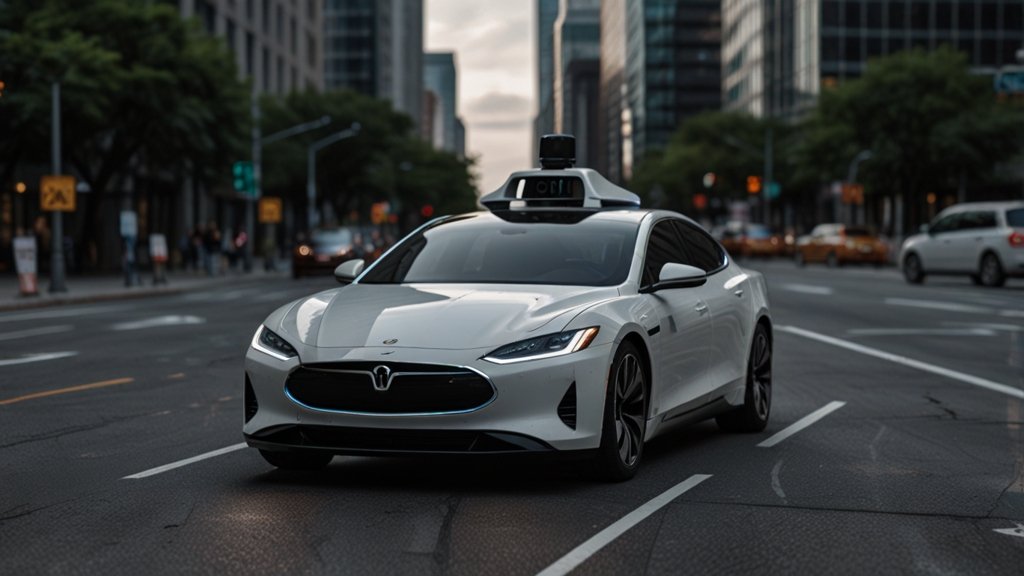The automotive industry is undergoing a profound transformation driven by advances in artificial intelligence, machine learning, and sensor technologies. At the heart of this revolution lies autonomous vehicles AI, a powerful force reshaping how we envision transportation in the near future. The promise of fully self-driving cars — vehicles that can navigate and operate without any human intervention — is no longer just a concept from science fiction but an accelerating reality being shaped by data-driven intelligence.
The Evolution of Autonomous Vehicles AI
Autonomous vehicles rely heavily on artificial intelligence to perceive their environment, make decisions, and execute driving tasks. These vehicles utilize a combination of sensors such as lidar, radar, cameras, and GPS, feeding data into sophisticated AI algorithms that analyze the surroundings in real time. This constant stream of data enables the vehicle to understand its position, detect obstacles, predict the behavior of other road users, and chart safe, efficient routes.
In recent years, the evolution of autonomous vehicles AI has been fueled by vast improvements in computational power and data processing techniques. Massive datasets collected from road tests, simulations, and user interactions feed continuous machine learning models that improve the vehicle’s decision-making abilities. This continuous feedback loop allows self-driving systems to learn from an ever-expanding pool of driving scenarios, enhancing safety and reliability over time.
Challenges on the Road to Full Autonomy
Despite rapid advancements, achieving full autonomy in vehicles remains a complex and multifaceted challenge. Real-world driving is unpredictable, and AI systems must handle a myriad of situations ranging from adverse weather conditions to erratic human behavior. Unlike controlled environments, public roads introduce variables that require not only rapid data analysis but also ethical and contextual understanding.
Autonomous vehicles AI must excel in perception — accurately recognizing pedestrians, cyclists, road signs, and other vehicles — while also understanding intent. For instance, predicting when a pedestrian might cross a street or when a neighboring car might suddenly change lanes demands nuanced AI models capable of interpreting subtle cues. Furthermore, ensuring that AI can safely respond to emergencies or unusual events without human intervention requires extensive validation and rigorous testing.
Additionally, the integration of AI with existing traffic systems and infrastructure is essential. Autonomous vehicles will need to communicate with smart traffic signals, road sensors, and other vehicles to coordinate movements seamlessly. Building this connected ecosystem presents technical and regulatory hurdles that are still being addressed.
Data: The Fuel Powering Autonomous Vehicles AI
The advancement of autonomous vehicles AI heavily depends on the availability and quality of data. Every mile driven by a self-driving car generates terabytes of information — from sensor inputs to control decisions — that feed back into improving the AI’s performance. This data-centric approach mirrors how humans learn through experience but at a scale and speed unattainable by human drivers.
Processing this massive volume of data requires robust infrastructure and sophisticated data analytics. Specialized platforms designed to clean, organize, and interpret sensor data play a pivotal role in refining AI models. These platforms facilitate collaborative data sharing and analysis, enabling researchers and engineers to build more accurate and resilient autonomous driving systems.
Beyond raw data, synthetic data and simulation environments have emerged as critical tools in the development pipeline. By recreating complex driving scenarios virtually, AI models can be trained on rare or dangerous situations that are difficult to encounter safely on real roads. This blend of real-world and simulated data accelerates progress towards safer and more reliable autonomous vehicles.
The Role of Machine Learning and Deep Learning
Machine learning (ML), especially deep learning, is at the core of autonomous vehicles AI. These algorithms allow vehicles to identify patterns, make predictions, and adapt to new situations without explicit programming for every possible scenario. Deep neural networks process sensor data such as images and point clouds to detect objects and classify their relevance.
Training these networks involves feeding enormous labeled datasets into the system, which then learns to recognize features autonomously. The more diverse and comprehensive the training data, the better the vehicle can perform in complex environments. This process requires significant computational resources and iterative refinement to avoid errors and biases.
Moreover, reinforcement learning techniques are being explored, where AI agents learn optimal driving strategies through trial and error in simulated environments. This approach allows autonomous vehicles AI to improve decision-making policies over time, especially in scenarios involving dynamic interactions with other road users.
Looking Ahead: The Journey to Full Autonomy
The road to full self-driving cars powered by autonomous vehicles AI is both exciting and challenging. While level 4 and level 5 autonomy — where vehicles operate independently in most or all conditions — are still under development, incremental progress is being made every day. Partial autonomy features like adaptive cruise control, lane keeping assist, and automated parking are already enhancing driver safety and comfort.
Continued investment in data infrastructure, AI research, and testing environments will accelerate this journey. Partnerships that enable secure data sharing and collaborative model training are proving crucial in overcoming technical hurdles.
Ultimately, the goal is to create autonomous vehicles that are not only intelligent but also trustworthy, ethical, and inclusive. Achieving this requires a holistic approach, combining cutting-edge technology with thoughtful regulation and community engagement.
You May Also Read: YELL51X-OUZ4 for Tiles? The Surprising Truth Behind the Viral Search Term











